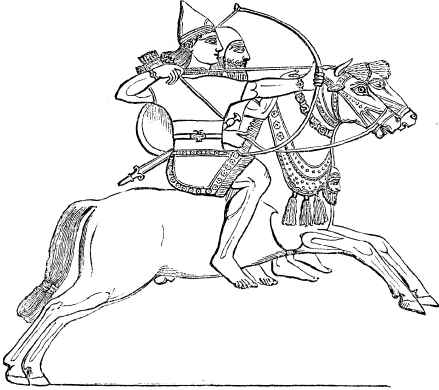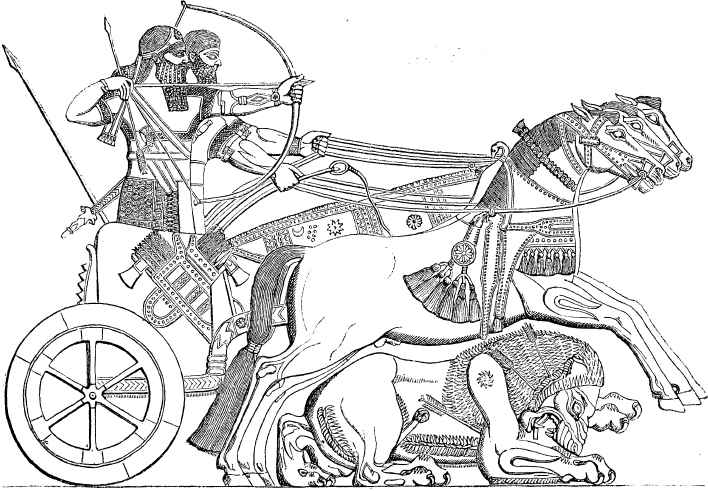752
HARPER'S NEW MONTHLY MAGAZINE.


fifty thousand horses feeding at
one time upon a vast plain near the Caspian Gates—the very name of the
country, coming from Peresh, a Chaldean and Hebrew
word, signifying horsemen.
We thus can trace through the dim
traditions of the past the horse leaving Egypt, passing into Assyria
and Persia, and following the rushing streams of population westward,
coming to Phrygia and the southern shores of the Euxine Sea, and, finally,
into Thessaly, the people of which, like the Mexicans of modern times,
conceived the horse and rider to be one, giving rise to the fable of the
centaurs, double-shaped and incomprehensible.
The introduction of
the
ASSYRIAN HORSEMEN.
apparently been lost with the
destruction of Nineveh. The plains of Babylonia furnished horses to the
Medes and Persians, which nations finally became renowned for their
horsemanship, particularly the latter, although Persia, before the age of
Cyrus, was entirely destitute of horses; but after that era, from the
personal example, encouragement, and recommendation of her kings, it
is stated that every man in that vast empire rode on horseback. So rich,
indeed, did Persia finally become in equine wealth, that one author
speaks of no less than one hundred and
horse from Egypt into Greece is
clearly hinted at in ancient mythology, where Neptune is represented
as striking a rock with his trident, from which issued a fiery steed; in
more simple language, the animal came from beyond the sea. The Romans
learned their horsemanship from the Greeks, and soon rivaled their
teachers. The attachment of this warlike people for the horse was often
carried to the height of folly and madness. Caligula invited his horse to
sup with him, giving him food from golden vessels ; not content with
this, he made his horse a

ASSYRIAN WARRIORS IN A CHARIOT, FROM
NIMROUD.